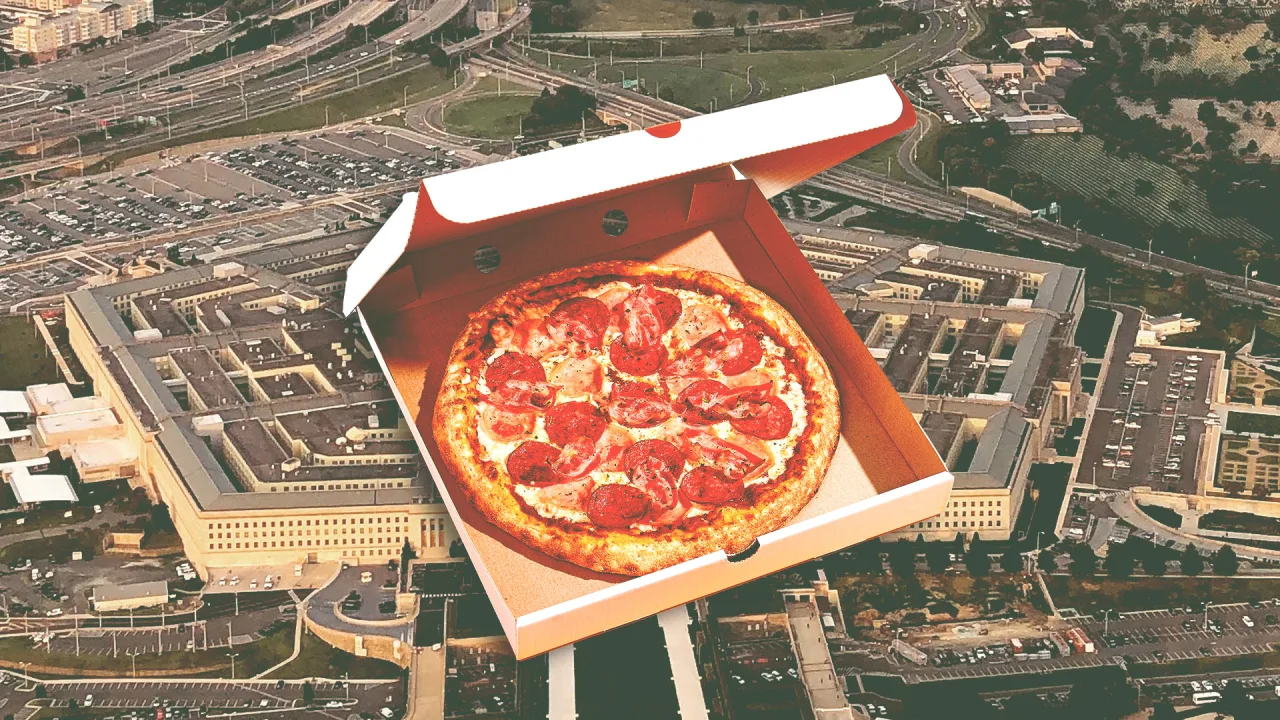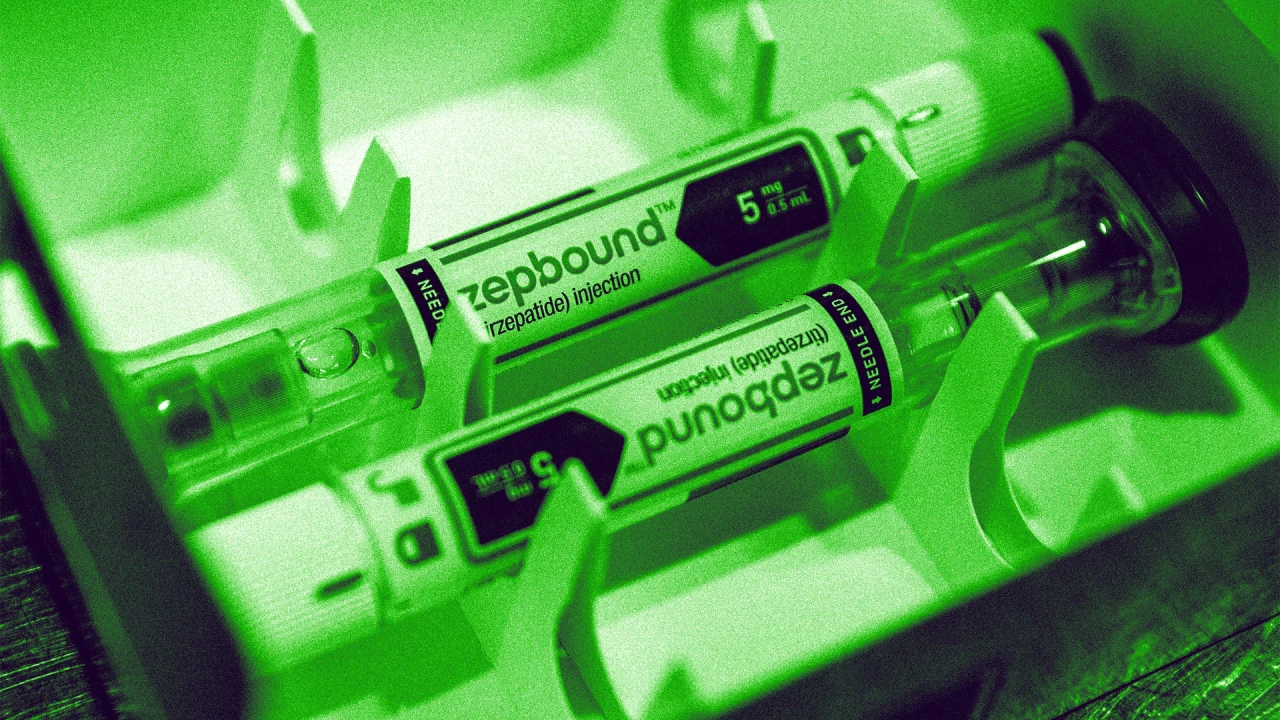Pentagon Pizza Index: The theory that surging pizza orders signal global crises
A different kind of pie chart is being used to predict global crises. A surge in takeout deliveries to the Pentagon has become a surprisingly accurate predictor of major geopolitical events, dubbed the “Pentagon Pizza Index.” Tracking activity at local pizza joints in Arlington County, the X account Pentagon Pizza Report noted an uptick in Google Maps activity from four pizza places near the Pentagon on June 12. We, The Pizza, District Pizza Palace, Domino’s, and Extreme Pizza all reportedly saw higher-than-usual order volumes around 7 p.m. ET. “As of 6:59 p.m. ET nearly all pizza establishments nearby the Pentagon have experienced a HUGE surge in activity,” the X account posted. The timing? Just hours before news broke of Israel’s major attack on Iran. As of 6:59pm ET nearly all pizza establishments nearby the Pentagon have experienced a HUGE surge in activity. pic.twitter.com/ZUfvQ1JBYM— Pentagon Pizza Report (@PenPizzaReport) June 12, 2025 The U.S. announced it was not involved in the attacks. “We are not involved in strikes against Iran, and our top priority is protecting American forces in the region,” Secretary of State Marco Rubio said in a statement released by the White House on June 12. However, as the theory goes, the surge in traffic at local pizza joints close to government buildings may have signaled hungry military leadership hunkering down to monitor unfolding events. “The kind of analytics we love,” read one comment on X. “Google Maps research beats some spy agencies around the world,” another user reacted. The predictive power of pizza isn’t a new theory. As Alex Selby-Boothroyd, The Economist’s head of data journalism, wrote on LinkedIn: “The Pentagon Pizza Index has been a surprisingly reliable predictor of seismic global events—from coups to wars—since the 1980s.” During the Cold War, Soviet operatives reportedly monitored pizza delivery activity in Washington, believing a sudden uptick in late-night orders signaled military personnel working overtime. They even gave it a code name: “Pizzint,” short for pizza intelligence. In January 1991, Frank Meeks, who then owned 43 Domino’s outlets in the Washington area, told the Los Angeles Times: “The news media doesn’t always know when something big is going to happen because they’re in bed, but [pizza] deliverers are out there at 2 in the morning.” He added that on the night of August 1, 1990, the CIA ordered a record number of pizzas in a single night—21 pies. A few hours later, Iraqi forces invaded Kuwait, marking the beginning of the Gulf War. As CNN’s then-Pentagon correspondent Wolf Blitzer reportedly said in 1990: “Bottom line for journalists: Always monitor the pizzas.” Of course, a correlation between pizza delivery and global crises is not a verified method of tracking world events. In a statement to Newsweek, the Pentagon dismissed the theory, noting they have plenty of pizza options inside the building, along with sushi, sandwiches, and donuts. They also disputed the timeline suggested by the Pentagon Pizza Report, saying it did “not align with the events.” Still, if you notice a spike in pizza orders near the Pentagon, it might be worth keeping an eye on the news.

A different kind of pie chart is being used to predict global crises.
A surge in takeout deliveries to the Pentagon has become a surprisingly accurate predictor of major geopolitical events, dubbed the “Pentagon Pizza Index.”
Tracking activity at local pizza joints in Arlington County, the X account Pentagon Pizza Report noted an uptick in Google Maps activity from four pizza places near the Pentagon on June 12. We, The Pizza, District Pizza Palace, Domino’s, and Extreme Pizza all reportedly saw higher-than-usual order volumes around 7 p.m. ET.
“As of 6:59 p.m. ET nearly all pizza establishments nearby the Pentagon have experienced a HUGE surge in activity,” the X account posted. The timing? Just hours before news broke of Israel’s major attack on Iran.
The U.S. announced it was not involved in the attacks. “We are not involved in strikes against Iran, and our top priority is protecting American forces in the region,” Secretary of State Marco Rubio said in a statement released by the White House on June 12.
However, as the theory goes, the surge in traffic at local pizza joints close to government buildings may have signaled hungry military leadership hunkering down to monitor unfolding events. “The kind of analytics we love,” read one comment on X. “Google Maps research beats some spy agencies around the world,” another user reacted.
The predictive power of pizza isn’t a new theory. As Alex Selby-Boothroyd, The Economist’s head of data journalism, wrote on LinkedIn: “The Pentagon Pizza Index has been a surprisingly reliable predictor of seismic global events—from coups to wars—since the 1980s.”
During the Cold War, Soviet operatives reportedly monitored pizza delivery activity in Washington, believing a sudden uptick in late-night orders signaled military personnel working overtime. They even gave it a code name: “Pizzint,” short for pizza intelligence.
In January 1991, Frank Meeks, who then owned 43 Domino’s outlets in the Washington area, told the Los Angeles Times: “The news media doesn’t always know when something big is going to happen because they’re in bed, but [pizza] deliverers are out there at 2 in the morning.” He added that on the night of August 1, 1990, the CIA ordered a record number of pizzas in a single night—21 pies. A few hours later, Iraqi forces invaded Kuwait, marking the beginning of the Gulf War.
As CNN’s then-Pentagon correspondent Wolf Blitzer reportedly said in 1990: “Bottom line for journalists: Always monitor the pizzas.”
Of course, a correlation between pizza delivery and global crises is not a verified method of tracking world events. In a statement to Newsweek, the Pentagon dismissed the theory, noting they have plenty of pizza options inside the building, along with sushi, sandwiches, and donuts. They also disputed the timeline suggested by the Pentagon Pizza Report, saying it did “not align with the events.”
Still, if you notice a spike in pizza orders near the Pentagon, it might be worth keeping an eye on the news.





































































![https //g.co/recover for help [1-866-719-1006]](https://newsquo.com/uploads/images/202506/image_430x256_684949454da3e.jpg)




























![[PATREON EXCLUSIVE] The Power of No: How to Say It, Mean It, and Lead with It](https://tpgblog.com/wp-content/uploads/2025/06/just-say-no.jpg?#)























































